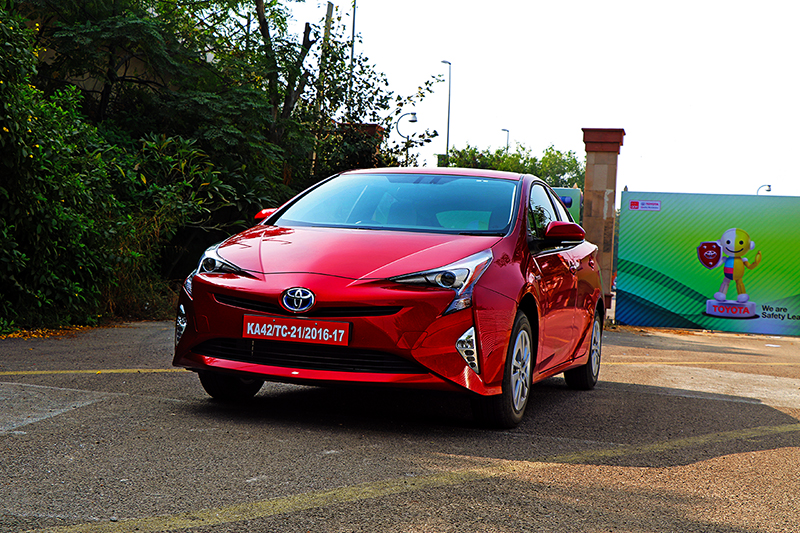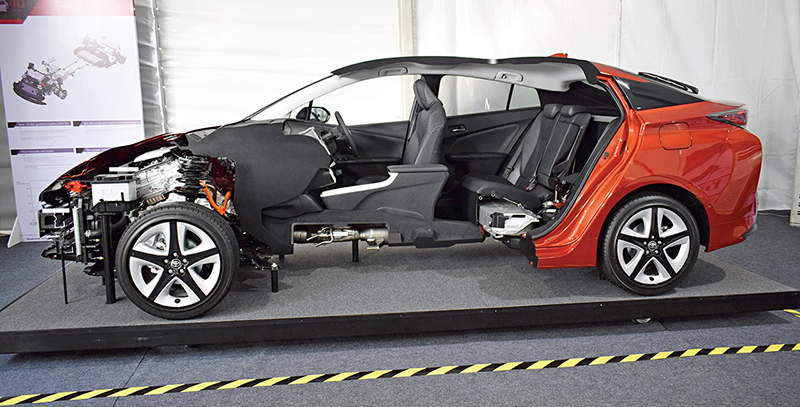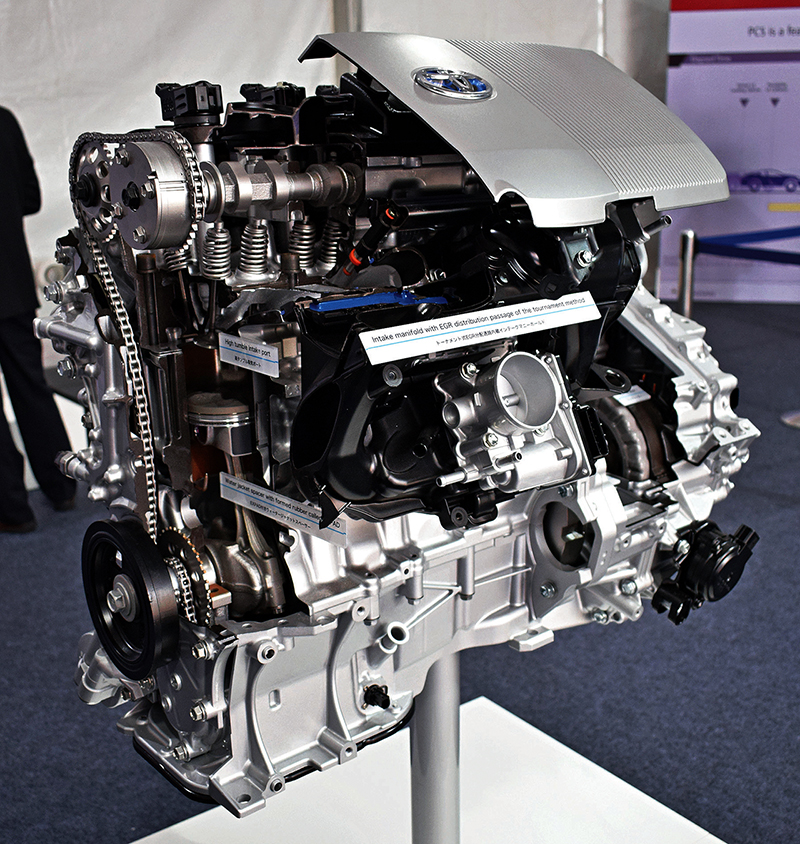The true master stroke, however, lies under that body which hides the new TNGA or Toyota Next Global Architecture. The Prius now enjoys the privilege of being the first car in the company’s line-up to be based on this versatile new platform, which can be adopted to various styles; ultimately reducing input costs by being the base for various other models. This new platform brings with it a stronger structure with improved rigidity, new double-wishbone independent rear suspension and lower centre of gravity. And, as mentioned earlier, the new Prius is longer, wider and lower than before.
Under the bonnet, too, the Prius has been improved. The 1.8-litre, in-line four-cylinder petrol engine based on Atkinson’s cycle still produces 96 PS and 142 Nm of torque; however, with new intake port the airflow to the combustion chamber has been improved. Thermal efficiency has improved and so has the overall fuel consumption. Toyota say despite the same power and torque figures of the gasoline engine, the overall performance has improved thanks to the new battery pack, motors and improved CVT.
Talking of the elephant in the room, the electric drivetrain, it has been updated with the motor, battery and other components now being lighter and more compact then before. Toyota say this helps efficiency and makes excellent use of the available space. The two motor-generators are all new and they are designed in such a way that they suit the new multi-shaft trans-axle setup of the Prius. Batteries have been re-designed, making them slimmer which allowed engineers to relocate them under the rear seats, thereby liberating more boot space. Toyota offer the new Prius with either nickel-metal hydride or lithium-ion battery packs and our guess is that the model that will be launched in India will come with the former rather than the latter.
Being in charge of all this technology, I did feel pretty special. Pressing the start-stop button was like doing so on a computer because the engine doesn’t come to life immediately. The Prius starts in ‘Normal’ mode, which engages the electric motors to propel forward. The Normal mode senses the use of the throttle and then swaps between electric and petrol power. There are three other modes as well, namely, EV, Eco and Power, with power being my personal favourite. The EV mode is completely electric; however, due to battery capacity limitations, this mode can power the car only for a few kilometres. While the Eco mode works like the Normal mode albeit with reduced response from the engine, the Power mode lets you enjoy the most of that 1.8-litre petrol-powered motor.






















